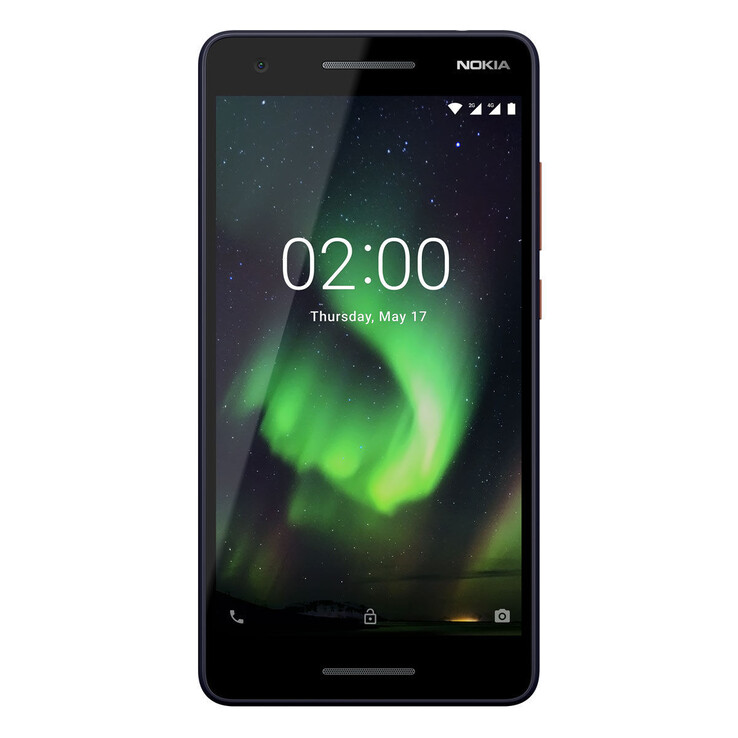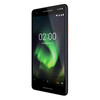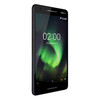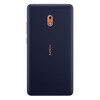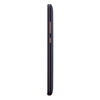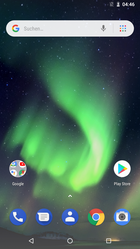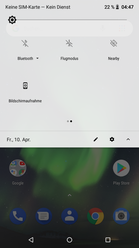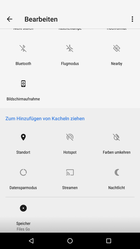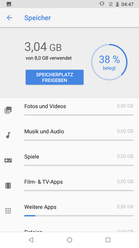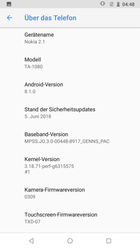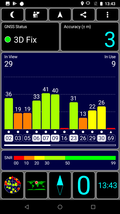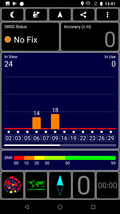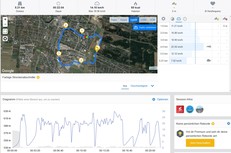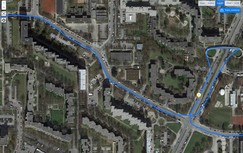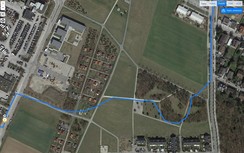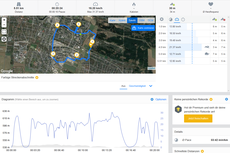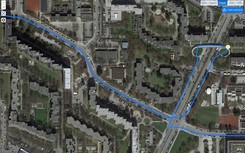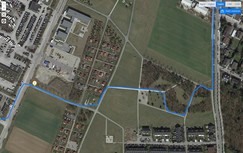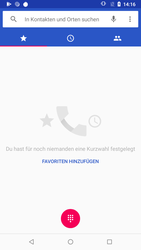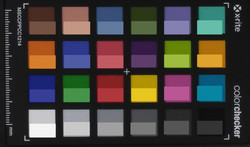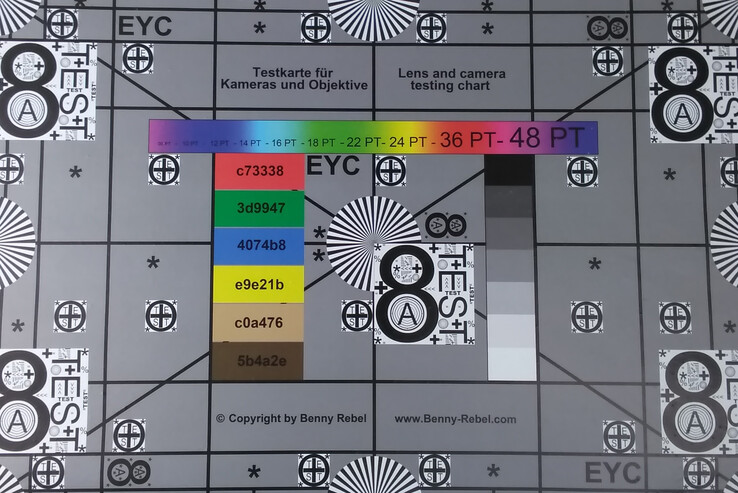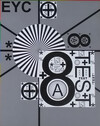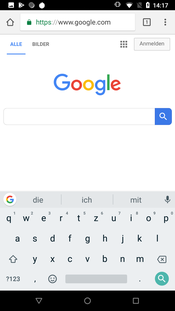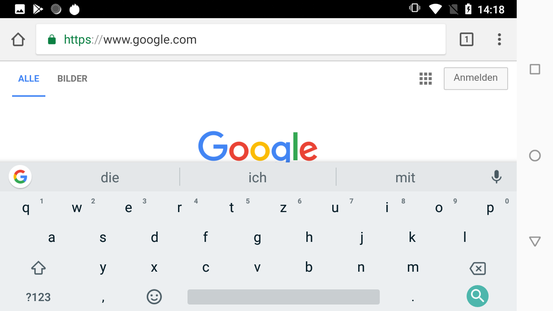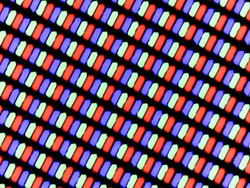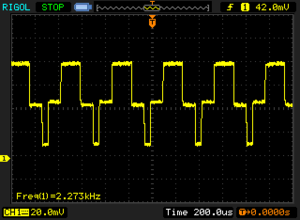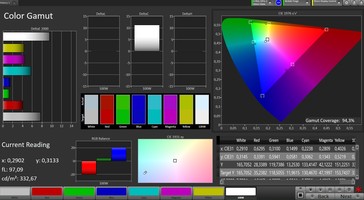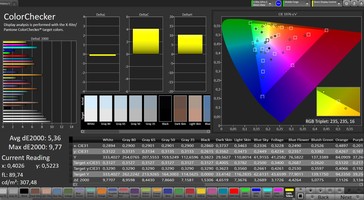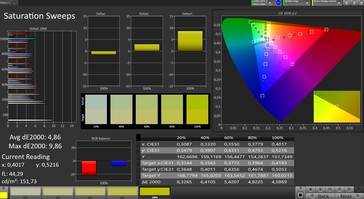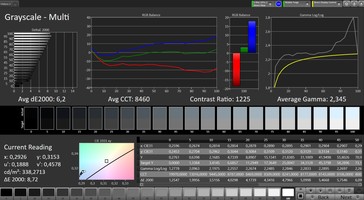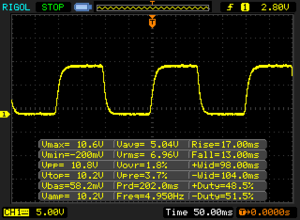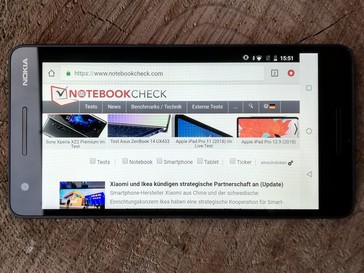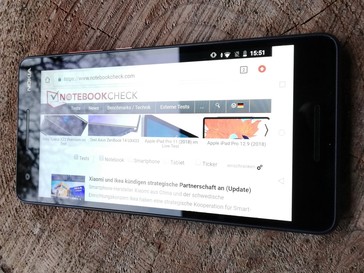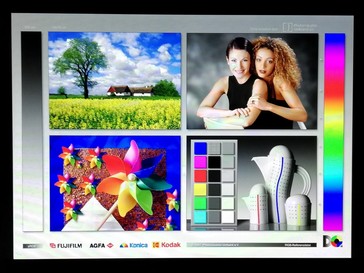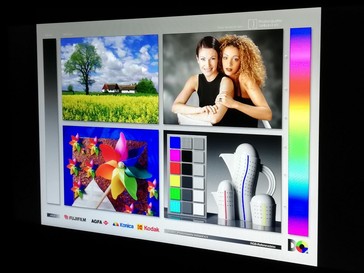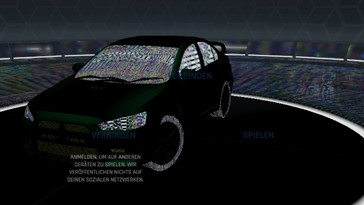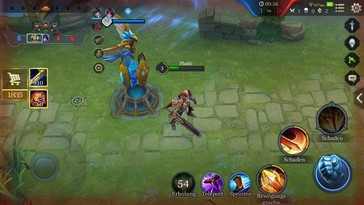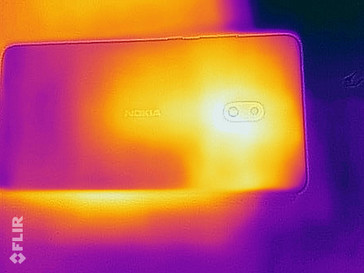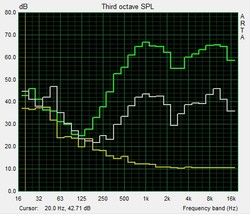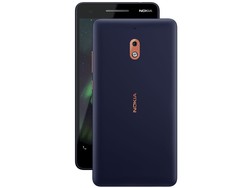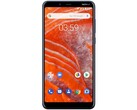Nokia 2.1 Smartphone Review
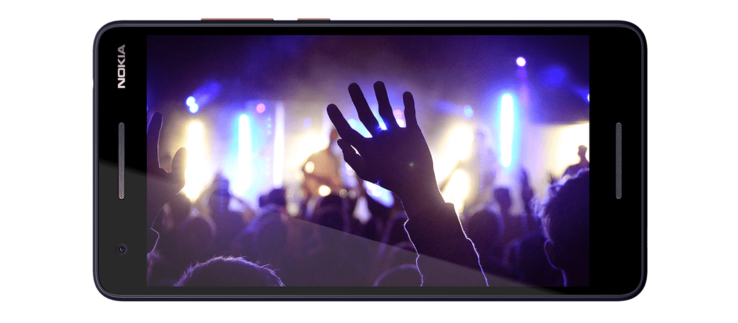
HMD Global, the Finnish company that revitalised the Nokia brand, has started bringing Android One to its mid-range and budget devices. The company started by shipping the Nokia 3.1 and Nokia 7.1 with Android One and has now consolidated its Android One offering with the Nokia 2.1. Android One promises to keep smartphones updated with the latest Android security patches, while also being free of any third-party apps among other features.
The Nokia 2.1 is equipped with a Qualcomm Snapdragon 425 SoC that integrates an Adreno 308 GPU, 1 GB and 8 GB of eMMC flash storage. The device does not have much space for user apps or data out of the box, but it does support up to 128 GB microSD cards for additional storage. Nonetheless, the Snapdragon 425 SoC is only powerful enough for basic tasks and will not provide the Nokia 2.1 with a noteworthy system performance.
We have chosen to compare the Nokia 2.1 against other budget smartphones that are similarly priced. We will compare our test device against the Gigaset GS100, the Honor 7A, Nokia 2 and the Wiko Jerry3.
Case
The Nokia 2.1 has a plastic case with a contrasting colour stripe that runs along the sides of the device. The same colour has also been used for the camera housing, the physical buttons and the Nokia branding on the back of the device. The company currently sells the Nokia 2.1 in blue with copper or silver accents and in grey with a silver accent.
Our test device is well-built with even and tight gaps between materials. The base case is also detachable, behind which sit the nano-SIM and microSD card slots. The battery is not swappable though.
The Nokia 2.1 is larger than all our comparison devices, primarily because of its 16:9 aspect ratio display and its rather large display bezels. Moreover, it is the joint heaviest alongside the Gigaset GS100 in our comparison table at 174 g (~6.1 oz). By contrast, the Nokia 2 is 13 g (0.46 oz) lighter, 0.4 mm (~0.016 in) thinner, 6.3 mm (~0.25 in) narrower and 10.1 mm (0.4 in) shorter than its successor.
Connectivity
HMD has equipped the Nokia 2.1 with a Qualcomm Snapdragon 425 SoC that integrates an Adreno 308 GPU, 1 GB of RAM and 8GB of eMMC flash storage. In short, the device should be powerful enough for simple applications such as WhatsApp or undemanding games. In our experience, more computationally intensive applications will not run at all or are plagued by frequent stutters with long load times.
The Nokia 2.1 has a micro USB port that operates at the USB 2.0 standard for charging the device or for wired data transmission. There is also a headphone jack and Bluetooth 4.2 support.
Software
The Nokia 2.1 ships with Android One Oreo at the time of writing, while our test device arrived with Android security patches dating June 5, 2018. Google provides security and system updates directly, so we would have expected our test device to have a more recent security patch installed than one which is almost six months old. The Nokia 2.1 has no third-party apps pre-installed though, which is a bonus as there is no bloatware to slow down the system. Android One Oreo also supports multiple user accounts should more than one person need to use the device.
Communication & GPS
The Nokia 2.1 supports GSM, 3G and LTE networks. The device uses LTE Cat.4 for up to 150 MBit/s download speeds and up to 50 MBit/s upload speeds.
The device also supports up to IEEE 802.11 b/g/n Wi-Fi and can connect to 2.4 GHz networks. Our test device averaged around 50 MBit/s in both iperf3 Client Wi-Fi tests, which puts it behind the Gigaset GS100 and Nokia 2 in our comparison table. Moreover, all our comparison devices and the Nokia 2.1 scored well below average in both tests. Overall, the Nokia 2.1 has ok Wi-Fi performance for a smartphone around that costs around €100 (~$114).
| Networking | |
| iperf3 transmit AX12 | |
| Gigaset GS100 | |
| Nokia 2 | |
| Nokia 2.1 | |
| Honor 7A | |
| Wiko Jerry 3 | |
| iperf3 receive AX12 | |
| Gigaset GS100 | |
| Nokia 2 | |
| Nokia 2.1 | |
| Honor 7A | |
| Wiko Jerry 3 | |
The Nokia 2.1 uses BeiDou, GLONASS and GPS including AGPS for location services. Using the GPS Test app, our test device achieved a satellite fix with up to 3 metres (~10 ft) accuracy outside. However, it could not find a Satfix when we tested it indoors.
We also took the Nokia 2.1 on a compulsory bike ride to assess its navigational accuracy against a professional navigation device, the Garmin Edge 520. Our test device plotted a 300 m (~984 ft) shorter route than the Garmin, the reasons for which are demonstrated in the pictures below. In short, the Nokia 2.1 regularly cuts corners to keep up with us as we cycled. The device is more accurate on straighter roads, which makes the Nokia 2.1 only suitable for simple navigation tasks.
Telephone Features & Call Quality
The Nokia 2.1 uses the standard Google suite of telephony apps. The Google Contacts and Phone apps function just as well as they do on other devices.
Calls sounded clear on our test device, but the volume was too low for our liking. The maximum call volume is so low that we struggled to hear our call partner when making a call next to a busy road. The audio quality is rather unbalanced too, which often dulled our call partner’s voice.
Cameras
The Nokia 2.1 has simple 5 MP front-facing and 8 MP rear-facing cameras, the former of which takes surprisingly good selfies, although fine details lack focus. Transitions between colours and objects are well demarcated though. Expectedly, the camera struggles in poor light. The default camera app includes options to adjust the brightness, exposure, and white balance. There is also a timer function should you need it.
The main camera takes passable landscape photos. While the object in focus is recognisable, transitions between colours and objects have noticeable image noise. Moreover, fine details look blurry, but photos generally look ok when they are not looked at closely. Macro shots look better though, with there being visible separations between colours and objects. Fine details lack clarity again with objects outside the area of focus often looking blurry in the resulting photo.
The 8 MP rear-facing camera takes surprisingly good low-light photos though. Colours and objects in focus are recognisable, although the latter is noticeably blurry. The rear-facing camera has the same camera options as the front-facing sensor.
Videos look as good as photos, but the image stabiliser ensures that videos track smoothly even in low-light. The default camera also has time-lapse and slow-motion features, but there are no image customisation options.
We also subjected the Nokia 2.1 to further camera tests under controlled lighting conditions. Generally, our test device reproduces colours too darkly, as demonstrated by the ColorChecker Passport chart to the right. The 8 MP rear-facing camera captures our test chart well though. Details and fine structures are reproduced clearly at the centre of the photo, but the chart looks visibly blurrier at the edges of the photo. Colours are also rather dark, while the bottom corners look paler than the rest of the image too.
Accessories & Warranty
The Nokia 2.1 comes with a USB charger, a matching USB Type-A to micro USB cable and a set of headphones. Nokia sells cases and general smartphone accessories on its website too. The device comes with 24 months manufacturer’s warranty. Please see our Guarantees, Return policies and Warranties FAQ for country-specific information.
Input Devices & Operation
The Nokia 2.1 uses the Google GBoard as its default keyboard. The app works just as well as it does on other devices. The touchscreen on our test device reacted quickly throughout testing and accurately reproduced our inputs on-screen. The display finish is too rough for our liking though and makes repeated multi-finger gestures a chore. By contrast, we had no such issues with the accelerometer, which reliably adjusted the orientation of the display during our tests.
Display
The Nokia 2.1 has a 5.5-inch IPS display with a 16:9 aspect ratio that runs at a native 1,280x720 resolution. Our test device achieves an average maximum brightness of 327 cd/m² according to X-Rite i1Pro 2, which is well below that of our comparison devices including its predecessor. Moreover, it also has an 82% evenly lit display, which is noticeably lower than our comparison devices too. We doubt whether most people would notice the difference in brightness uniformity between the Nokia 2.1 and its predecessor in daily use, but it is unimpressive nonetheless. The display also uses pulse-width modulation (PWM) to regulate brightness, which can cause some people to experience eye strain and headaches. We measure PWM at 2,273 Hz on our test device, which should be high enough not to trouble most people. Those who are PWM sensitive should bear this in mind though when deciding whether to buy the Nokia 2.1, as it could still cause some people issues.
| |||||||||||||||||||||||||
Brightness Distribution: 82 %
Center on Battery: 338 cd/m²
Contrast: 1252:1 (Black: 0.27 cd/m²)
ΔE ColorChecker Calman: 5.36 | ∀{0.5-29.43 Ø4.77}
ΔE Greyscale Calman: 6.2 | ∀{0.09-98 Ø5}
94.3% sRGB (Calman 2D)
Gamma: 2.345
CCT: 8460 K
| Nokia 2.1 IPS, 1280x720, 5.5" | Gigaset GS100 IPS, 1440x720, 5.5" | Nokia 2 IPS, 1280x720, 5" | Honor 7A IPS, 1440x720, 5.7" | Wiko Jerry 3 IPS, 960x480, 5.5" | |
|---|---|---|---|---|---|
| Screen | -17% | -7% | 18% | -28% | |
| Brightness middle (cd/m²) | 338 | 442 31% | 527 56% | 417 23% | 370 9% |
| Brightness (cd/m²) | 327 | 446 36% | 503 54% | 395 21% | 367 12% |
| Brightness Distribution (%) | 82 | 86 5% | 91 11% | 88 7% | 90 10% |
| Black Level * (cd/m²) | 0.27 | 0.35 -30% | 0.68 -152% | 0.18 33% | 0.4 -48% |
| Contrast (:1) | 1252 | 1263 1% | 775 -38% | 2317 85% | 925 -26% |
| Colorchecker dE 2000 * | 5.36 | 8.03 -50% | 5.3 1% | 6.46 -21% | 8.58 -60% |
| Colorchecker dE 2000 max. * | 9.77 | 15.81 -62% | 9.2 6% | 10.72 -10% | 16.5 -69% |
| Greyscale dE 2000 * | 6.2 | 10.4 -68% | 5.8 6% | 5.8 6% | 9.3 -50% |
| Gamma | 2.345 94% | 2.02 109% | 2.12 104% | 2.423 91% | 2.083 106% |
| CCT | 8460 77% | 10070 65% | 7894 82% | 7839 83% | 9315 70% |
* ... smaller is better
Screen Flickering / PWM (Pulse-Width Modulation)
| Screen flickering / PWM detected | 2273 Hz | ||
The display backlight flickers at 2273 Hz (worst case, e.g., utilizing PWM) . The frequency of 2273 Hz is quite high, so most users sensitive to PWM should not notice any flickering. In comparison: 53 % of all tested devices do not use PWM to dim the display. If PWM was detected, an average of 8081 (minimum: 5 - maximum: 343500) Hz was measured. | |||
Our test device has a commendably low 0.27 cd/m² black value, which helps it achieve an impressive 1,252:1 contrast ratio. The Nokia 2.1 is only beaten by the Honor 7A in our comparison table and has a visibly more vibrant display than its predecessor, the Nokia 2. We also analysed our test device with CalMAN analysis software, which demonstrated that the display has a blue tint to it. Unfortunately, there are no display colour modes or an adjustable colour temperature to mitigate the blue tint.
Display Response Times
| ↔ Response Time Black to White | ||
|---|---|---|
| 30 ms ... rise ↗ and fall ↘ combined | ↗ 17 ms rise | |
| ↘ 13 ms fall | ||
| The screen shows slow response rates in our tests and will be unsatisfactory for gamers. In comparison, all tested devices range from 0.1 (minimum) to 240 (maximum) ms. » 79 % of all devices are better. This means that the measured response time is worse than the average of all tested devices (20.2 ms). | ||
| ↔ Response Time 50% Grey to 80% Grey | ||
| 42 ms ... rise ↗ and fall ↘ combined | ↗ 23 ms rise | |
| ↘ 19 ms fall | ||
| The screen shows slow response rates in our tests and will be unsatisfactory for gamers. In comparison, all tested devices range from 0.165 (minimum) to 636 (maximum) ms. » 66 % of all devices are better. This means that the measured response time is worse than the average of all tested devices (31.6 ms). | ||
The Nokia 2.1 is usable outdoors, with the display being bright enough for use outside on cloudy days. However, we struggled to read the display in bright sunlight as it simply does not get bright enough to overcome any reflections that the glossy display finish attracts.
Performance
The Nokia 2.1 is equipped with a Qualcomm Snapdragon 425 SoC that integrates an Adreno 308 GPU, 1 GB of RAM and 8 GB of eMMC flash storage. The hardware combination is basic and struggles with running numerous background apps or those which are computationally intensive. The Nokia 2.1 performed well overall during testing, but oddly the system performed noticeably slower after we rebooted it and the device would occasionally reboot if we pushed it too hard.
Moreover, some of the benchmarks that we usually subject our test devices to did not work on the Nokia 2.1. Our selection of comparison tables is therefore rather sparse. However, our test device frequently finished second to the Honor 7A in those that did work. The Nokia 2.1 resoundingly beat its predecessor too.
| PCMark for Android - Work 2.0 performance score (sort by value) | |
| Nokia 2.1 | |
| Gigaset GS100 | |
| Nokia 2 | |
| Honor 7A | |
| Wiko Jerry 3 | |
| Average Qualcomm Snapdragon 425 (MSM8917) (2829 - 3831, n=18) | |
| GFXBench 3.0 | |
| on screen Manhattan Onscreen OGL (sort by value) | |
| Nokia 2.1 | |
| Gigaset GS100 | |
| Nokia 2 | |
| Honor 7A | |
| Wiko Jerry 3 | |
| Average Qualcomm Snapdragon 425 (MSM8917) (3.7 - 11, n=18) | |
| Average of class Smartphone (18 - 166, n=155, last 2 years) | |
| 1920x1080 1080p Manhattan Offscreen (sort by value) | |
| Nokia 2.1 | |
| Nokia 2 | |
| Honor 7A | |
| Wiko Jerry 3 | |
| Average Qualcomm Snapdragon 425 (MSM8917) (1.3 - 3, n=17) | |
| Average of class Smartphone (12 - 606, n=154, last 2 years) | |
| AnTuTu v6 - Total Score (sort by value) | |
| Nokia 2.1 | |
| Gigaset GS100 | |
| Nokia 2 | |
| Honor 7A | |
| Wiko Jerry 3 | |
| Average Qualcomm Snapdragon 425 (MSM8917) (29054 - 39106, n=17) | |
The Nokia 2.1 also finished on par with our comparison devices in the browser benchmarks. Our test device even finished top of our Mozilla Kraken 1.1 benchmark, although it is still below average and the average of Snapdragon 425 powered devices that we have already tested.
Our test device loads websites quickly in daily use and scrolling felt smooth throughout testing. Media content sometimes needs a few moments more to load though.
| JetStream 1.1 - Total Score | |
| Honor 7A (Chrome 67) | |
| Average Qualcomm Snapdragon 425 (MSM8917) (15.5 - 18.7, n=16) | |
| Nokia 2.1 (Chrome 70) | |
| Gigaset GS100 (Chrome 68) | |
| Nokia 2 (Chrome 65) | |
| Wiko Jerry 3 (Chrome 67) | |
| Octane V2 - Total Score | |
| Average of class Smartphone (2228 - 126661, n=194, last 2 years) | |
| Honor 7A (Chrome 67) | |
| Average Qualcomm Snapdragon 425 (MSM8917) (2411 - 3374, n=17) | |
| Nokia 2.1 (Chrome 70) | |
| Gigaset GS100 (Chrome 68) | |
| Nokia 2 (Chrome 65) | |
| Wiko Jerry 3 (Chrome 67) | |
| Mozilla Kraken 1.1 - Total | |
| Wiko Jerry 3 (Chrome 67) | |
| Nokia 2 (Chrome 65) | |
| Gigaset GS100 (Chrome 68) | |
| Honor 7A (Chrome 67) | |
| Nokia 2.1 (Chrome 70) | |
| Average Qualcomm Snapdragon 425 (MSM8917) (10742 - 16192, n=17) | |
| Average of class Smartphone (257 - 28190, n=154, last 2 years) | |
* ... smaller is better
The Nokia 2.1 came out on top of our comparison devices in our memory performance tests. However, the 8 GB of eMMC flash storage does not offer much space for user apps or data, so we would recommend using a microSD card where possible.
HMD Global states that the Nokia 2.1 supports up to 128 GB microSD cards. Unfortunately, we could not format our Toshiba Exceria Pro M501 reference card as internal storage, which meant that we could only save apps to the paltry 8 GB of internal storage. The microSD card reader is on par with our comparison devices though, and is well above average.
| Nokia 2.1 | Gigaset GS100 | Nokia 2 | Honor 7A | Wiko Jerry 3 | Average 8 GB eMMC Flash | Average of class Smartphone | |
|---|---|---|---|---|---|---|---|
| AndroBench 3-5 | -40% | -27% | -2% | -50% | -56% | 1792% | |
| Sequential Read 256KB (MB/s) | 288.3 | 97.2 -66% | 131.1 -55% | 254.8 -12% | 117.1 -59% | 128.8 ? -55% | 2235 ? 675% |
| Sequential Write 256KB (MB/s) | 51.2 | 24 -53% | 50.8 -1% | 72.5 42% | 50.8 -1% | 22.1 ? -57% | 1871 ? 3554% |
| Random Read 4KB (MB/s) | 50.5 | 17.6 -65% | 17.44 -65% | 39.2 -22% | 24.18 -52% | 18.1 ? -64% | 297 ? 488% |
| Random Write 4KB (MB/s) | 13.45 | 6.2 -54% | 8.1 -40% | 9.4 -30% | 11.23 -17% | 5.35 ? -60% | 343 ? 2450% |
| Sequential Read 256KB SDCard (MB/s) | 79.4 ? | 79.5 ? 0% | 81.9 ? 3% | 84.9 ? 7% | 16 ? -80% | 43.1 ? -46% | |
| Sequential Write 256KB SDCard (MB/s) | 61.9 ? | 61 ? -1% | 61.2 ? -1% | 65.4 ? 6% | 7.4 ? -88% | 29.1 ? -53% |
Games
The Adreno 308 GPU is powerful enough for some games, but only older titles or those with low graphics requirement. Complex games such as "Asphalt 9: Legends" are out of the question, with graphics errors occurring at the start of the game. The game subsequently crashed too. "Arena of Valor" worked well though with relatively short load times and a smooth gaming experience at low graphics.
Emissions
Temperature
The Nokia 2.1 is a comparatively cool device, with surface temperatures reaching only a maximum of 30 °C (~86 °F) at idle and 33 °C (~91 °F) under load. Our test device never felt overly warm during testing regardless of how hard we pushed it. In short, the Nokia 2.1 should not thermal throttle in daily use.
(+) The maximum temperature on the upper side is 33.5 °C / 92 F, compared to the average of 35.2 °C / 95 F, ranging from 21.9 to 247 °C for the class Smartphone.
(+) The bottom heats up to a maximum of 31.5 °C / 89 F, compared to the average of 34 °C / 93 F
(+) In idle usage, the average temperature for the upper side is 27.7 °C / 82 F, compared to the device average of 32.9 °C / 91 F.
Speakers
The Nokia 2.1 stereo front-firing speakers get relatively loud, but provide an unbalanced sound. The speakers under-represent mid-high tones as demonstrated by our speaker graphs, while mid and ultra-high tones dominate audio playback. Overall, we would recommend using the speakers only for occasional audio playback and would suggest using external speakers or headphones for prolonged listening sessions. The integrated 3.5 mm jack delivers clean audio and grips inputs tightly.
The included headphones sound rather bass-heavy for our liking, but they are good enough for listening to music. The over-representation of bass tones makes voices sound noticeably dampened though.
Nokia 2.1 audio analysis
(±) | speaker loudness is average but good (74.7 dB)
Bass 100 - 315 Hz
(-) | nearly no bass - on average 27.2% lower than median
(±) | linearity of bass is average (10.4% delta to prev. frequency)
Mids 400 - 2000 Hz
(±) | higher mids - on average 5.1% higher than median
(±) | linearity of mids is average (7.5% delta to prev. frequency)
Highs 2 - 16 kHz
(+) | balanced highs - only 3.7% away from median
(±) | linearity of highs is average (7.3% delta to prev. frequency)
Overall 100 - 16.000 Hz
(±) | linearity of overall sound is average (24.3% difference to median)
Compared to same class
» 57% of all tested devices in this class were better, 7% similar, 36% worse
» The best had a delta of 11%, average was 35%, worst was 134%
Compared to all devices tested
» 73% of all tested devices were better, 6% similar, 21% worse
» The best had a delta of 4%, average was 24%, worst was 134%
Honor 7A audio analysis
(±) | speaker loudness is average but good (78.6 dB)
Bass 100 - 315 Hz
(-) | nearly no bass - on average 58.8% lower than median
(+) | bass is linear (0% delta to prev. frequency)
Mids 400 - 2000 Hz
(-) | nearly no mids - on average 58.8% lower than median
(+) | mids are linear (0% delta to prev. frequency)
Highs 2 - 16 kHz
(-) | nearly no highs - on average 58.8% lower than median
(+) | highs are linear (0% delta to prev. frequency)
Overall 100 - 16.000 Hz
(-) | overall sound is not linear (113.1% difference to median)
Compared to same class
» 87% of all tested devices in this class were better, 2% similar, 11% worse
» The best had a delta of 11%, average was 35%, worst was 134%
Compared to all devices tested
» 96% of all tested devices were better, 1% similar, 3% worse
» The best had a delta of 4%, average was 24%, worst was 134%
Battery Life
Power Consumption
The Nokia 2.1 is a comparatively frugal device like its predecessor. Our test device consumes a minimum of 0.7 W at idle and a maximum of 4.8 W under load, which makes the Nokia 2.1 the most energy efficient device in our comparison table. The Nokia 2 consumes a minimum of 22% less at idle, but it consumes a maximum of 5.32 W under load and averages 1.28 W more under load too. Moreover, our test device achieved 57% lower power consumption across all our tests than the average of Snapdragon 425 powered devices that we have currently tested.
| Off / Standby | |
| Idle | |
| Load |
|
Key:
min: | |
| Nokia 2.1 4000 mAh | Gigaset GS100 3000 mAh | Nokia 2 4100 mAh | Honor 7A 3000 mAh | Wiko Jerry 3 2500 mAh | Average Qualcomm Snapdragon 425 (MSM8917) | Average of class Smartphone | |
|---|---|---|---|---|---|---|---|
| Power Consumption | -52% | 6% | -44% | -35% | -45% | -56% | |
| Idle Minimum * (Watt) | 0.7 | 1.3 -86% | 0.55 21% | 1.3 -86% | 1 -43% | 1.113 ? -59% | 0.847 ? -21% |
| Idle Average * (Watt) | 1.2 | 2.1 -75% | 1.02 15% | 1.6 -33% | 1.5 -25% | 2.19 ? -83% | 1.446 ? -21% |
| Idle Maximum * (Watt) | 1.9 | 2.9 -53% | 1.09 43% | 2.9 -53% | 2.3 -21% | 2.55 ? -34% | 1.63 ? 14% |
| Load Average * (Watt) | 3.2 | 4.4 -38% | 4.48 -40% | 3.7 -16% | 5 -56% | 4.32 ? -35% | 6.95 ? -117% |
| Load Maximum * (Watt) | 4.8 | 5.3 -10% | 5.32 -11% | 6.4 -33% | 6.3 -31% | 5.5 ? -15% | 11.3 ? -135% |
* ... smaller is better
Battery Life
The Nokia 2.1 has a 4,000-mAh battery that lasted an impressively long 13:29 hours in our Wi-Fi battery life test. Our test device finished well ahead of the Honor 7A, Gigaset GS100 and Wiko Jerry3, but it fell just short of the Nokia 2, which lasted for an extra 21 minutes with its 100 mAh larger battery. Overall, the Nokia 2.1 should easily last a full working day’s use.
The included 10-W charger takes around four hours to fully recharge our test device. The charger is also powerful enough to keep charging the device even when we subjected it to a stress test.
| Nokia 2.1 4000 mAh | Gigaset GS100 3000 mAh | Nokia 2 4100 mAh | Honor 7A 3000 mAh | Wiko Jerry 3 2500 mAh | |
|---|---|---|---|---|---|
| Battery runtime | |||||
| WiFi v1.3 (h) | 13.5 | 8.9 -34% | 14 4% | 11 -19% | 6.6 -51% |
Pros
Cons
Verdict
The Nokia 2.1 is a budget smartphone with a great battery life and a lean operating system. The device is powerful enough for most everyday applications such as WhatsApp and even some light gaming. However, buyers should be aware that there is only 8 GB of internal storage and apps cannot be stored on a microSD card. This means that people will only be able to install a few apps before the Nokia 2.1 runs out of space.
The Nokia 2.1 is good value for money and is a strong performer for the money. In short, it is an ideal entry-level smartphone.
The device has dual SIM functionality and has a dedicated microSD card slot and has surprisingly good cameras. However, the display is rather disappointing. Overall, the dual SIM functionality opens up the possibility of adding in the SIM from your main device for situations when you would prefer to use a cheaper secondary smartphone.
Nokia 2.1
- 11/29/2018 v6 (old)
Mike Wobker


